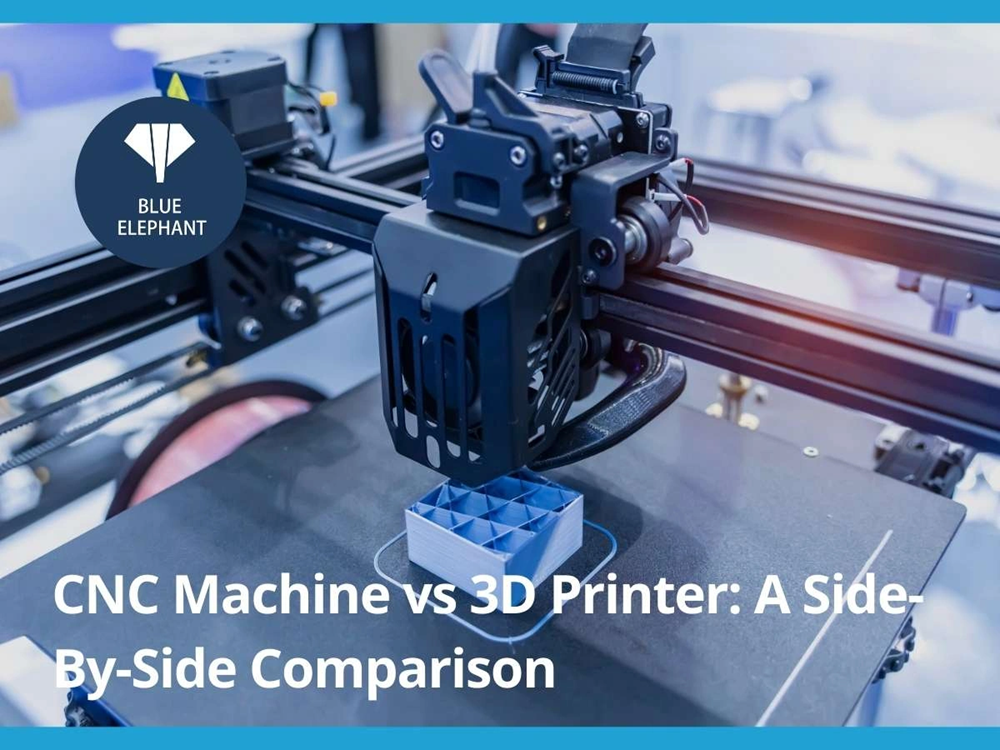
Additive manufacturing vs machining remains a crucial choice engineers face when creating titanium parts. CNC machining produces outstanding accuracy, repeatability, and surface quality. The tolerances reach down to just a few micrometers on every axis. Both methods bring unique benefits to titanium fabrication. CNC machining stands out for its precision and works great with metals, plastics, and composites.
Manufacturers need to balance several factors between CNC and 3D printing. These technologies take opposite approaches – one adds material while the other removes it. Engineers often pick CNC machining for high-performance structural components that need extreme durability. 3D printing shines with complex geometries, quick turnaround times, and lower costs for small batches. The choice between additive manufacturing and CNC machining comes down to what the titanium part needs.
This piece dives into how these manufacturing methods compare with titanium work. It covers material capabilities, costs, and ground applications. Engineers can make better choices about their titanium manufacturing needs by knowing the strengths and limits of both processes.
Additive vs Subtractive: How the Processes Differ
The main difference between titanium parts manufacturing methods lies in how they process materials. Traditional manufacturing cuts away material, while newer technologies build parts by adding layers.
3D Printing for Titanium: Layer-by-Layer Fusion
3D printing of titanium, also known as additive manufacturing (AM), creates parts by fusing metal powder or wire layer by layer. The process happens inside a vacuum chamber at temperatures between 700-1600 degrees Celsius. These temperatures let titanium melt and flow easily. The digital world of titanium 3D printing features several key technologies:
Selective Laser Melting (SLM) melts titanium powder using lasers with a beam resolution of 50-80 µm and layer thickness of 20-40 µm. The process runs in an inert gas environment with relatively low bed temperatures.
Electron Beam Melting (EBM) uses electron beams to fuse powder under high vacuum conditions with a preheated powder bed (600-700°C). EBM works with thicker layers (50-100 µm) and builds bulky parts faster than SLM, though with lower resolution.
Directed Energy Deposition (DED) feeds titanium powder or wire through a nozzle and melts it right as it’s deposited. This creates “near net shape” parts that need finish machining. Large components work especially well with this method.
CNC Machining for Titanium: Precision Subtractive Cutting
CNC machining takes a different approach by cutting away material from a solid block to create the desired shape. Titanium’s excellent properties come with machining challenges due to its poor heat conductivity—about 1/6 of steel and 1/20 of aluminum. Heat builds up at cutting edges, which wears tools faster and raises costs.
CNC machining delivers better precision than 3D printing. Machined parts also have a smoother surface finish, with Ra values as low as 1.6µm compared to 5-15µm for SLM or 20-50µm for EBM processes.
Effect of Process Type on Material Waste and Efficiency
Material usage shows the biggest difference between these methods. Standard machining wastes over 80% of raw titanium through cutting. 3D printing wastes much less material—under 5%. Most unused powder in 3D printing can be reused, which makes the process more resource-efficient.
AM technologies use energy more efficiently. Life cycle assessments show that most AM types (BJT, DED, EB-PBF) use less energy during manufacturing and produce fewer greenhouse gases than traditional processes like forging and machining.
Production volume determines the economic benefits. Traditional machining needs big upfront tooling investments, but becomes budget-friendly for large production runs. 3D printing needs less setup cost and offers more design freedom. This makes it a great choice for small batches or complex parts that would need multiple machining steps.
Material Capabilities with Titanium
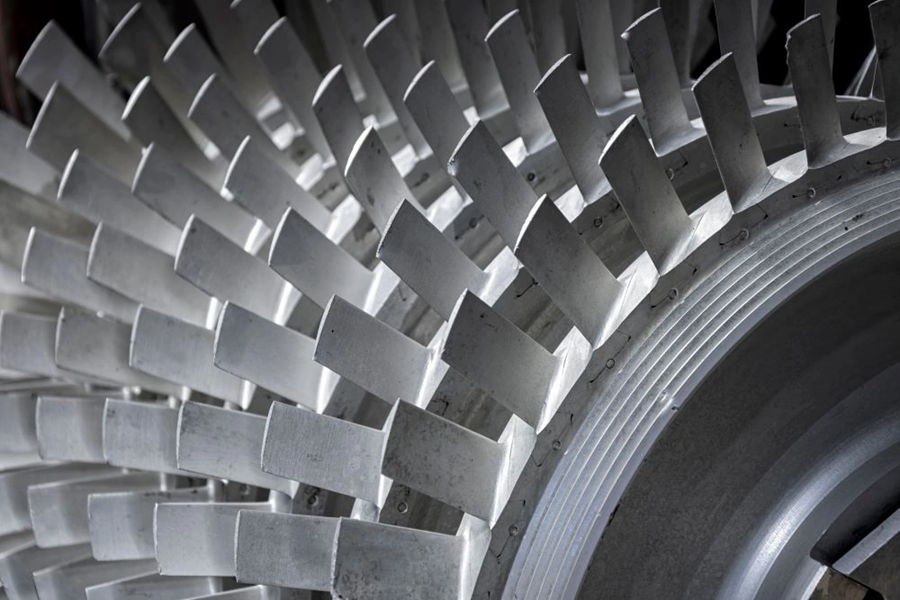
Titanium manufacturing processes use different methods that affect titanium alloys and their properties in unique ways. The choice between additive manufacturing and machining for titanium parts depends on understanding these differences.
Supported Titanium Grades: Ti-6Al-4V and Others
Ti-6Al-4V (Grade 5) rules both additive manufacturing and CNC machining. This grade makes up more than half of all titanium used worldwide. The alpha-beta alloy combines 6% aluminum, 4% vanadium, and 90% titanium to create a perfect balance of strength, weight, and corrosion resistance.
Grade 5 leads the pack, but other titanium grades shine in specialized applications:
- Ti-6Al-4V ELI (Grade 23): This grade has fewer interstitial elements than Grade 5. Medical implants benefit from their better biocompatibility and fracture toughness
- Commercially Pure Titanium (Grades 1-4): These grades resist corrosion well. Their strength and ductility change based on oxygen content
- Titanium Beta 21S: This grade is much stronger than others, especially when temperatures rise above 750°C
3D printing works with fewer titanium grades than CNC machining. Most 3D printing focuses on Ti-6Al-4V, but this gap gets smaller as the technology improves.
Thermal and Mechanical Properties Retention
Manufacturing methods change titanium’s microstructure in different ways. CNC machining keeps the material’s natural microstructure intact without heat stress cycles. Parts maintain uniform mechanical properties throughout.
3D printed titanium develops columnar grain structures along the build direction. These structures create directional properties (anisotropy). The strength of these parts is lower than machined ones unless they go through post-processing like hot isostatic pressing (HIP).
Titanium alloys work great in temperatures from cryogenic to about 600°C (1,112°F). 3D printing can change these thermal properties, so parts often need heat treatment to work their best.
Post-Processing Needs for Titanium in Both Methods
CNC-machined parts are simple to finish. They just need deburring and surface finishing.
3D printed titanium parts need more work:
- Stress Relief: Parts spend 1-2 hours at 600-800°C in argon or vacuum to release internal tension
- Hot Isostatic Pressing: This process runs at 920-930°C and 100-120 MPa for 2-4 hours to reduce internal porosity
- Surface Finishing: Parts need abrasive blasting, polishing, or chemical etching to fix layer lines and rough surfaces
These extra steps take more time and money for 3D printed parts. They’re essential to match the mechanical properties of machined titanium components. The final choice between methods comes down to the application’s needs and whether design complexity matters more than extra processing time.
Dimensional Accuracy and Surface Finish
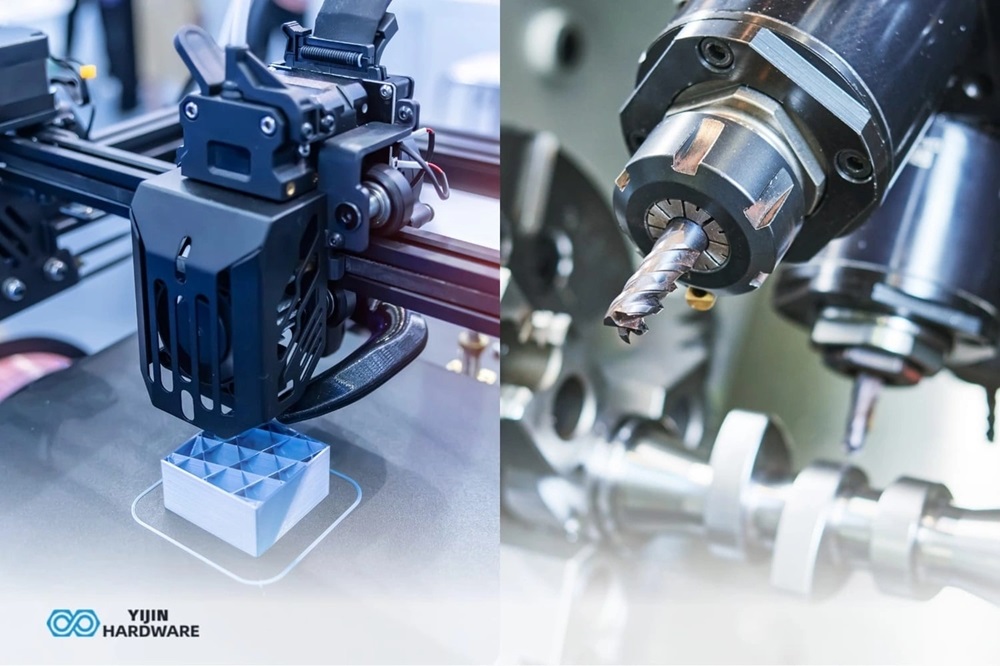
Quality standards for titanium parts depend heavily on precision tolerances and surface finish. These features play a key role in how well the parts work and look.
Tolerance Levels: ±0.1mm vs ±0.025mm
CNC machining beats additive manufacturing when it comes to dimensional accuracy. The standard tolerance range for CNC machining sits between ±0.025mm and ±0.125mm. Some parts can even reach ±0.005mm. These tight tolerances make CNC machining perfect for aerospace and medical parts where precision really matters.
Metal 3D printing through Selective Laser Melting (SLM) reaches tolerances between ±0.1mm and ±0.2mm. That’s about twice the variation you’d see with CNC processes. Larger parts show this difference even more. Many manufacturers print titanium parts a bit bigger than needed and use CNC machining later to get the exact dimensions.
Surface Roughness: Ra 10µm vs Ra 1.6µm
Surface finish shows another clear difference between these methods. CNC-machined titanium parts come off the machine with surface finishes of Ra 1.6µm or better. Most applications need little extra work to use these smooth surfaces.
Metal 3D printed titanium shows surface roughness around Ra 7µm. Some processes can leave surfaces between Ra 10-70µm. The layer-by-layer building creates visible lines between 0.1mm and 0.5mm thick. Research shows that 3D printed titanium parts have 10-20% more surface roughness than traditional parts.
Post-Processing Techniques: Polishing, Anodizing, Sanding
Each manufacturing method needs different levels of finishing work. CNC-machined parts usually just need light deburring and basic surface treatments to look good. Bead blasting creates uniform matte finishes, while anodizing helps prevent corrosion and adds color options.
Metal 3D printed titanium needs more work after printing. These parts require:
- Heat treatment to fix internal stresses and make parts stronger
- Media blasting or sanding to smooth out layer lines
- Sometimes complete surface machining to meet tolerance requirements
Recent studies show an interesting twist – the brittle nature of 3D printed titanium can actually lead to smoother machined surfaces during finishing. This varies based on how you cut the material and its specific properties.
Cost and Production Volume Considerations
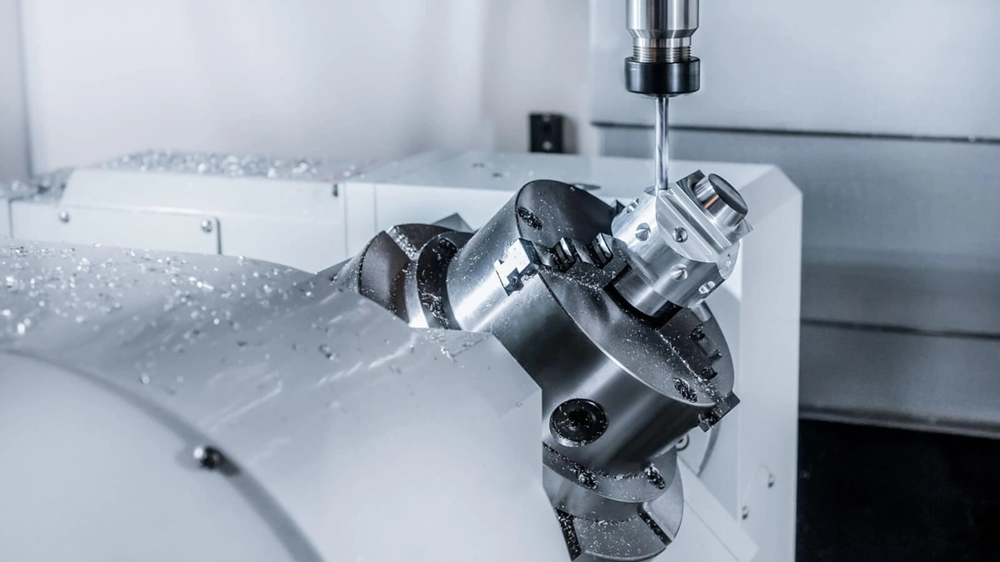
Money plays a major role in choosing between additive manufacturing and machining for titanium components. Production economics, along with technical capabilities, shape manufacturing decisions.
Setup and Tooling Costs: CNC vs 3D Printing
These manufacturing approaches need very different investments. CNC machining needs big money upfront for tooling, fixtures, and programming. A typical 5kg titanium aerospace component’s programming costs about $150. Fixturing adds another $100, while machine setup costs hover around $250.
3D printing costs much less to set up. You don’t need specialized fixtures, and the programming time drops dramatically. This means faster turnaround and lower investment, which makes it a great choice for prototypes and small production runs.
Cost per Part: Low vs High Volume
The number of parts you need to make can determine your manufacturing choice. When you need fewer than 10 units, 3D printing is usually the most economical solution. The math changes as numbers go up – CNC machining becomes cheaper at higher quantities because it’s faster.
The “buy-to-fly” ratio shows how much material you buy versus what ends up in the final part. This creates a key economic turning point. Some additive processes work out cheaper than machining when titanium parts have buy-to-fly ratios above 3:1. At 7:1 ratios, printing costs less than half of conventional machining.
Material Waste and Reusability in Titanium Manufacturing
Each manufacturing method handles resources differently. Traditional titanium machining wastes a lot—prompt swarf makes up 25-40% of yearly titanium alloy ingot production. Only high-grade swarf can go back into new titanium alloys. The recovery ratios average around 63% for alloy ingots and 56% for mills.
Additive manufacturing deposits material exactly where it’s needed, which cuts down waste. This matters even more with expensive materials like titanium. Energy use tells a similar story—machining 1kg of titanium uses over 40kWh, while certain additive processes need less than 1kWh to add 1kg.
Real-World Applications for Titanium Parts
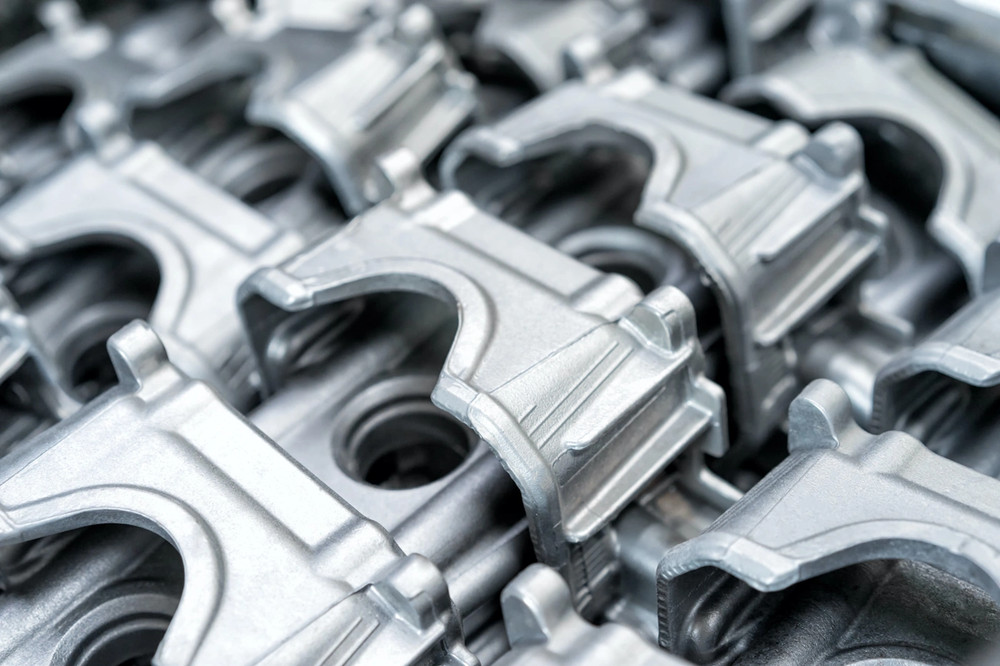
Titanium’s exceptional properties make it perfect for critical applications in industries of all types, and each manufacturing method brings unique benefits.
Aerospace: Lightweight Brackets and Engine Components
The aerospace industry values titanium’s high strength-to-weight ratio because weight reduction helps fuel efficiency. Titanium alloys excel in compressor blades, jet engine rings, and airframe components. Additive manufacturing creates complex titanium structures like wings and tails that reduce the purchase-to-fly ratio. This technology produces optimized lattice structures and cuts the original weight by up to 63% through topology optimization.
Medical: Implants and Surgical Tools
Ti-6Al-4V emerges as titanium’s most dependable alloy for medical applications due to its superior biocompatibility and resistance to corrosion. Medical professionals rely on titanium for surgical instruments, bone plates, and dental implants. Additive manufacturing has transformed medical device production by creating individual-specific implants that match each patient’s anatomy. 3D printing produces specialized frameworks with exact internal structures that benefit tissue engineering and regenerative medicine.
Automotive: Heat-Resistant Structural Parts
The automotive sector chooses titanium for brake calipers, brackets, rims, and pillars. 3D printed titanium brake calipers weigh 40% less than their machined aluminum counterparts. Both manufacturing methods offer distinct advantages. CNC machining delivers reliable mechanical performance for critical load-bearing components. 3D printing, however, creates complex internal geometries and lightweight designs that traditional methods cannot achieve.
Comparison Table
| Characteristic | Additive Manufacturing (3D Printing) | CNC Machining |
|---|---|---|
| Dimensional Tolerances | ±0.1mm to ±0.2mm | ±0.025mm to ±0.125mm |
| Surface Roughness | Ra 7µm – 70µm | Ra 1.6µm or better |
| Material Waste | <5% material loss | >80% material loss |
| Setup Costs | Lower original investment, minimal tooling required | High upfront costs for tooling, fixtures, and programming |
| Post-Processing Requirements | Extensive (stress relief, hot isostatic pressing, surface finishing) | Minimal (mainly deburring and surface finishing) |
| Best Production Volume | Small batches, prototypes | Large production runs |
| Temperature Range | Build temperatures: 700-1600°C | Poor thermal conductivity (1/6 of steel) |
| Key Advantages | – Complex geometries possible – Lower setup costs – Material efficiency – Rapid prototyping | – Superior accuracy – Better surface finish – Uniform mechanical properties – Tighter tolerances |
| Common Applications | – Customized medical implants – Complex aerospace components – Lightweight structures | – Precision aerospace parts – Surgical instruments – Critical load-bearing components |
Conclusion
A closer look at additive manufacturing and CNC machining shows each method has its own sweet spots for making titanium parts. CNC machining is without doubt better at precision. It can achieve tolerances of ±0.025mm while 3D printing reaches ±0.1mm. This makes machining the go-to choice for parts that need exact specs, especially when you have aerospace and medical applications where precision can affect performance and safety.
All the same, 3D printing shines in areas where traditional machining doesn’t work very well. You can create complex shapes that would be impossible or too expensive to machine by building them layer by layer. It also wastes less material – under 5% compared to machining’s 80%. This is a big deal as it means that when working with expensive titanium alloys, you save more.
Production volume is another key factor to think about. Small batches and prototypes usually work better with 3D printing because setup costs are lower and you don’t need special fixtures. But for large production runs, CNC machining works better with its faster speeds and better surface finish once you spread the initial tooling costs across more parts.
The “buy-to-fly” ratio helps determine where costs break even. Parts with ratios above 3:1 usually cost less to 3D print, while simpler shapes that need less material removal are affordable through traditional machining.
Surface finish is crucial too. Machined titanium parts come out at Ra 1.6μm right after production. 3D printed parts usually show roughness around Ra 7μm and need extra finishing steps to match that quality.
Engineers should weigh these factors carefully when choosing between additive manufacturing and machining for titanium parts. Traditional machining still leads for the highest precision and surface quality, though 3D printing technology keeps getting better faster. Projects with complex internal structures, custom shapes, or minimal waste do better with 3D printing despite some limitations.
The manufacturing scene keeps changing as both technologies improve. Future advances will likely reduce the gaps between these methods, though each will keep its strengths for specific uses. Many titanium parts will do best with hybrid approaches – using 3D printing for complex features, then machining critical surfaces – getting the best of both worlds.
Key Takeaways
Understanding the fundamental differences between additive manufacturing and CNC machining for titanium parts helps engineers make informed decisions based on precision requirements, production volume, and cost considerations.
• CNC machining delivers superior precision with tolerances of ±0.025mm and surface finishes of Ra 1.6µm, making it ideal for critical aerospace and medical components requiring exact specifications.
• 3D printing excels in material efficiency with less than 5% waste compared to machining’s 80% material loss, offering significant cost savings for expensive titanium alloys.
• Production volume determines economic viability – 3D printing proves cost-effective for batches under 10 units, while CNC machining becomes economical for larger production runs.
• Complex geometries favor additive manufacturing while simple, high-precision parts benefit from traditional machining’s superior accuracy and minimal post-processing requirements.
• Hybrid approaches combining both methods often provide optimal results, using 3D printing for complex features followed by selective machining of critical surfaces.
The choice between these manufacturing methods ultimately depends on balancing precision requirements, geometric complexity, production volume, and material efficiency to achieve the best outcome for specific titanium applications.
FAQs
Q1. What are the key differences between additive manufacturing and CNC machining for titanium parts? Additive manufacturing builds parts layer-by-layer, allowing for complex geometries but with lower precision (±0.1mm tolerances). CNC machining cuts material away, achieving higher precision (±0.025mm tolerances) and better surface finish, but with more material waste.
Q2. How do the costs compare between 3D printing and machining titanium components? 3D printing has lower setup costs and is more economical for small batches (under 10 units). CNC machining has higher initial tooling costs but becomes more cost-effective for larger production runs due to faster production speeds.
Q3. What are the main advantages of 3D printing titanium parts? 3D printing excels at creating complex geometries, offers greater design flexibility, and significantly reduces material waste (less than 5% compared to over 80% for machining). It’s ideal for customized medical implants and lightweight aerospace components.
Q4. In which applications does CNC machining of titanium still outperform 3D printing? CNC machining remains superior for parts requiring high precision, tight tolerances, and excellent surface finish. It’s preferred for critical aerospace components, surgical instruments, and load-bearing parts where consistent mechanical properties are crucial.
Q5. How does material efficiency compare between additive and subtractive titanium manufacturing? Additive manufacturing is significantly more material-efficient, with less than 5% waste compared to over 80% material loss in CNC machining. This efficiency is particularly valuable when working with expensive materials like titanium alloys.

